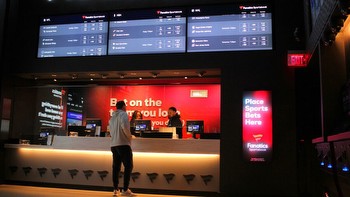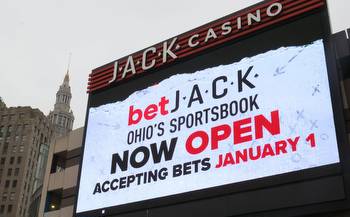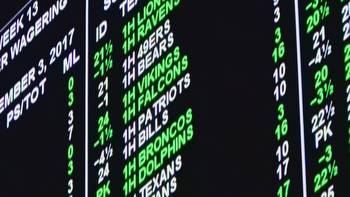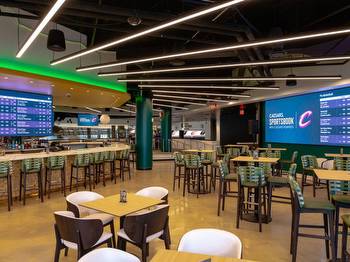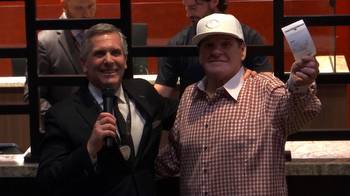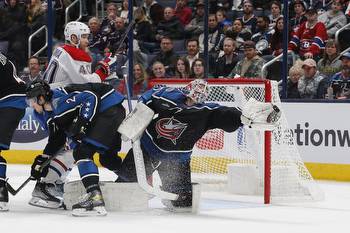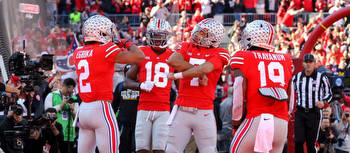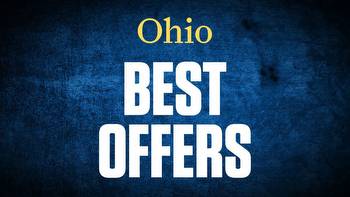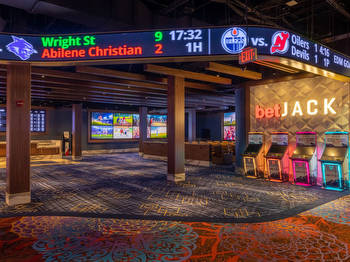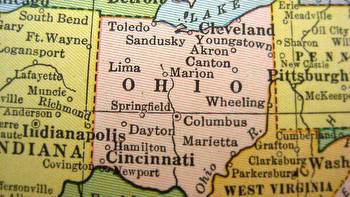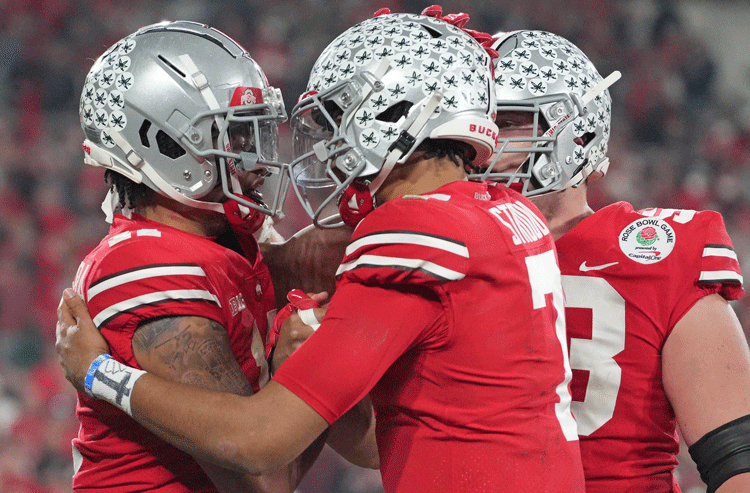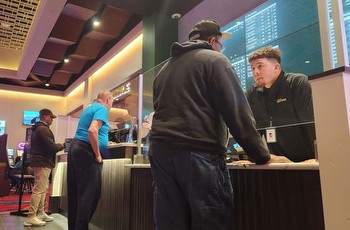Lloyd: The gambling rage taking over Ohio and how it could someday help build new stadiums

One month into Ohio’s new world of parlays, point spreads and more prop bets than Patrick Mahomes’ passing yards, the early returns are about what you’d expect for this sports-wild state.
Actually, that’s not entirely true. The early projections are surpassing my already-outsized expectations. I knew Ohioans would be drawn to legalized gambling the way Browns fans attract anger and sadness, but I never thought Ohio could out-Vegas the actual Las Vegas.
Ohio could rank as high as fourth in the country in money wagered this year, according to PlayOhio, which vigorously monitors the gambling market in our state. They have Ohioans projected to spend around $8 billion in bets in the inaugural year of legalized gambling. If we get there, it would surpass Nevada ($7.7 billion) and every other state besides New York ($17 billion), Illinois ($11.4 billion) and New Jersey ($10 billion).
Ohio remains in the top 10 in population but also ranks somewhere between 35th and 40th in average household income, depending on the study. It’s easy to see how this might become problematic.
We can now sit on our couch and bet on the outcome of every play and drive of every NFL game. We can bet on whether Donovan Mitchell will score more than 24 points or whether Evan Mobley can grab more than six rebounds.
We can bet the spreads before the game and then again and again and again as the line shifts throughout the game — all from our smartphones without ever leaving the couch.
Sports betting sites have flooded the market and are throwing around millions in marketing, giving away “free” bets while luring everyone from lifelong gamblers to soccer moms learning for the first time about parlays and anytime touchdowns.
Clearly, it’s working.
I walked through the new 10,000-square-foot sportsbook at Rocket Mortgage FieldHouse before a recent Cavs game. The whole thing felt a bit underwhelming. There’s a large bar upstairs, but the seating looks more appropriate for a frequent flyer airport lounge than Caesars Sportsbook in Las Vegas.
Nevertheless, it’s functional with a betting window downstairs, kiosks upstairs and plenty of televisions for all the night’s games. Upgrades certainly can be made in the future if the demand remains after the novelty of sports betting fades.
The Guardians will not have a sportsbook in Progressive Field — baseball’s rules are different from the NBA and it is prohibited by Major League Baseball to house a sportsbook within the confines of the stadium — but the team has partnered with Bet365 and is toying with the idea of doing something directly outside the gate. Bet365, though not yet a household name in America like some of the other more popular books, is huge in England and with European soccer and is trying to grow its brand stateside.
Teams and their employees are trying to navigate this awkward dance and adjust to a life in which the leagues embrace gambling, but not for any employees.
The latest, most public example was when the Browns had to separate themselves from Bernie Kosar after the legendary quarterback placed a $19,000 bet on the Browns to beat the Steelers. Bets for thee, but not for me.
Now that sports gambling is here, it’s not unreasonable to believe online casinos won’t be far behind. There will come a day sooner rather than later when we can sit on our couch and bet real money on blackjack, craps and roulette while taking the Browns to cover and betting a Nick Chubb parlay of 20 carries, 100 yards and an anytime touchdown.
I believe gambling should be legal, but it also concerns me that our state, with an average household income of less than $90,000 by most measures, could spend upward of $8 billion annually in sports bets.
Where is all that money coming from? And who will be spending important dollars out of their households that should be going elsewhere?
PlayOhio reported that BetMGM, Caesars Sportsbook and DraftKings already violated rules surrounding advertising and promotion. Specifically, all three failed to clearly display messaging about responsible sports gambling and post a problem gambling helpline within their advertisements. I liken it to the surgeon general’s label all smokers ignore every time they pick up a pack of cigarettes. It’s noble but not exactly effective.
With all of this newfound revenue pouring in, I wondered in a recent Browns mailbag whether eventually Ohio laws can be adjusted to allow for some of this new money to be funneled back into the sports facilities that create this demand for sports gambling. All it takes is the right lobbyist to bring the right legislation.
The FieldHouse recently completed its major renovation and the Guardians are just beginning a drastic face-lift of their park. The timing on their leases was just a bit too early.
I’ve long believed FirstEnergy Stadium will be the next stadium replaced in Cleveland despite the fact it’s also the most recently built. The location is awful and the sightlines are terrible for some of the most expensive seats. Putting a dome on an existing structure just isn’t feasible or cost-effective (estimates range from $500 million and up just for a roof), not to mention the available space needed.
A number of Guardians executives would privately love a domed stadium but never really entertained the idea during renovation talks because of financial and logistical reasons. Aside from the money, Progressive Field is crammed into a tight 12 acres on the corner of Carnegie and Ontario in the middle of downtown. The real estate needed just for the housing mechanism of a retractable roof on Progressive Field, I was told, would extend all the way to the cemetery that sits across the street on East Ninth. It just isn’t feasible, at least not at the current site.
For now, the bulk of the state’s tax share of gambling revenue is marked for education, and smaller slices will go to such things as gambling addiction programs and programs for military veterans.
As teams leverage cities, counties and states for hundreds of millions in new facilities, doesn’t it make sense for sports gambling-related revenue to ultimately pay for some of these facilities?
The state of Minnesota, which does not have legalized gambling, agreed to pay for $348 million of the $1 billion price tag on the Vikings’ U.S. Bank Stadium primarily through tax revenue collected from charitable gambling — specifically from electronic pull tab tickets. The pull tabs have been so popular that the state is in position to pay off its debt by the end of this year — 20 years ahead of schedule.
Ohio’s tax rate on gambling is 10 percent. A statewide legislation to increase the amount to 13 percent or 15 percent would allow the additional tax revenue to go to stadium construction and capital repairs.
Of course, there are many such facilities already in Ohio: FirstEnergy Stadium, Progressive Field and Rocket Mortgage FieldHouse just in Cleveland; Cincinnati has football and baseball stadiums for the Reds and Bengals; and Columbus has Nationwide Arena, Value City Arena and Ohio Stadium. There are also minor-league facilities scattered across the state from Toledo to Akron, Youngstown and all points south.
Gambling tax revenue won’t fix or replace all of them, but it could certainly help. As the resistance to using public dollars to build sports facilities intensifies, it’s a logical solution to a growing debate. Let the ones who use it most help pay for it. It’s the only sure bet in the game.








